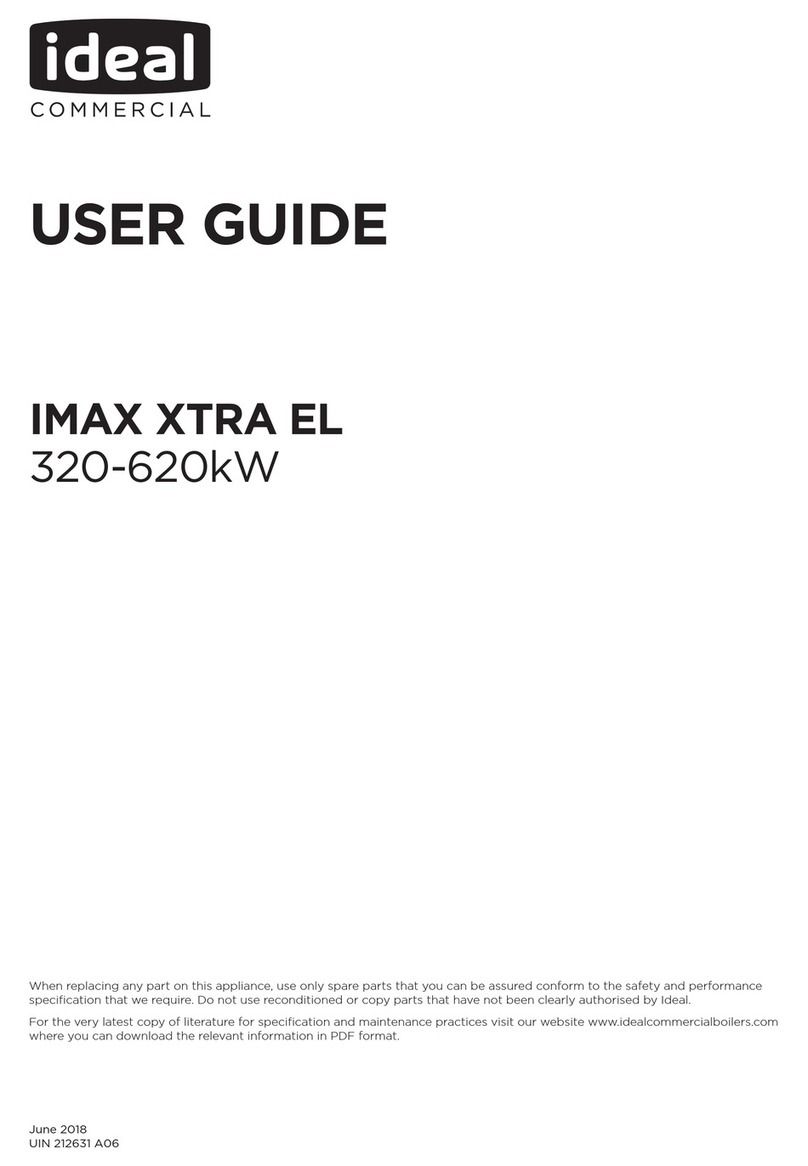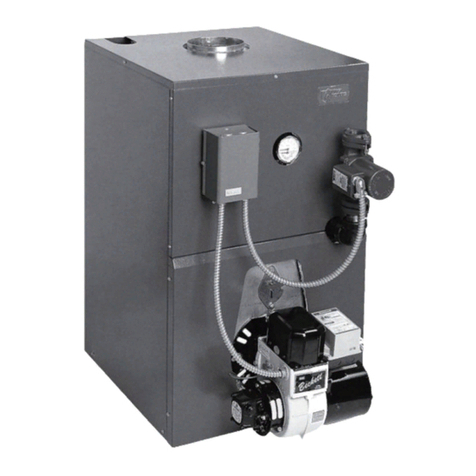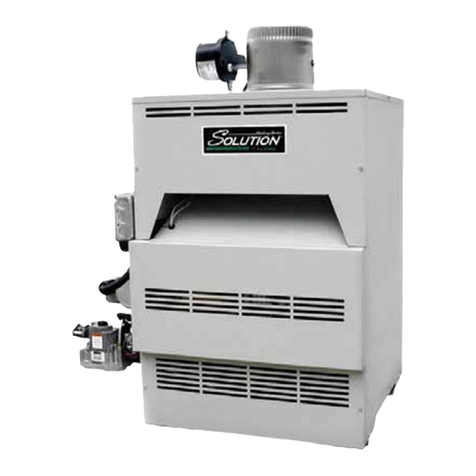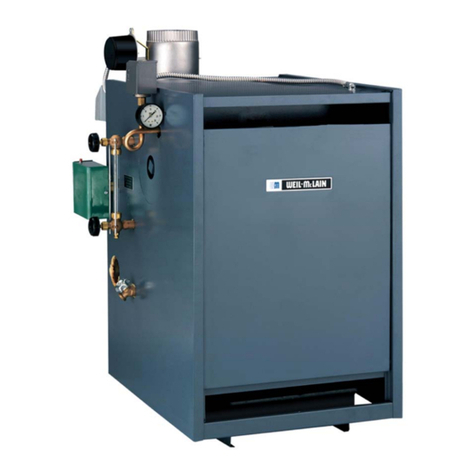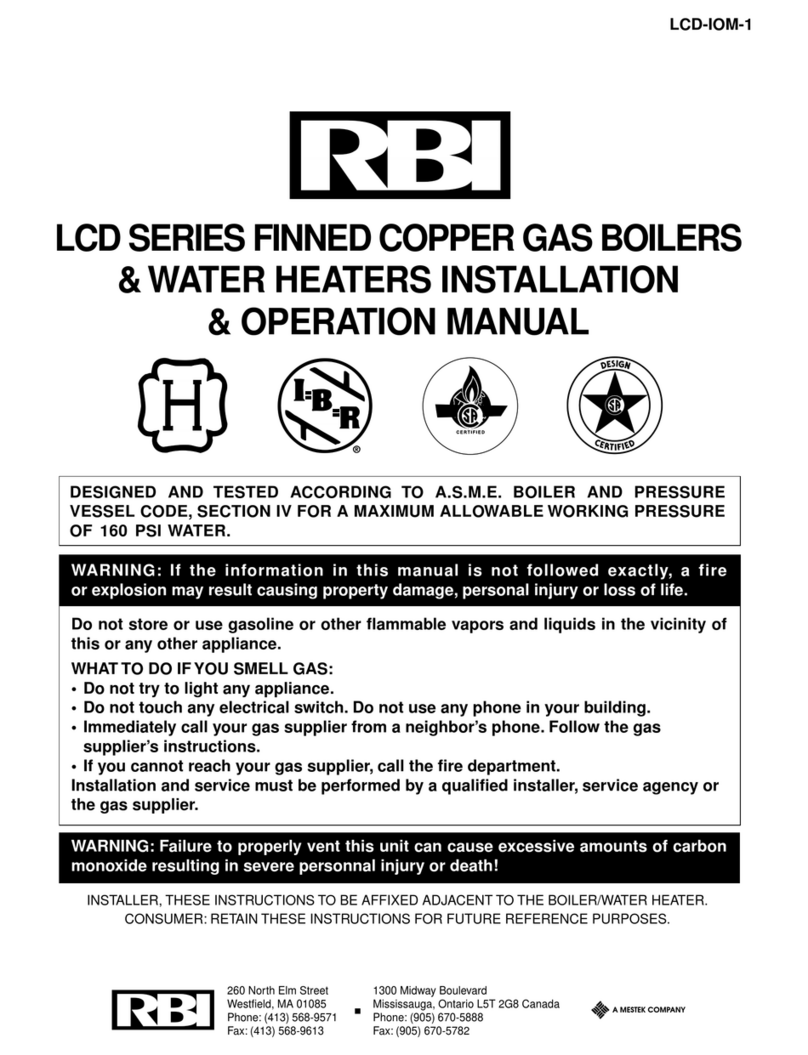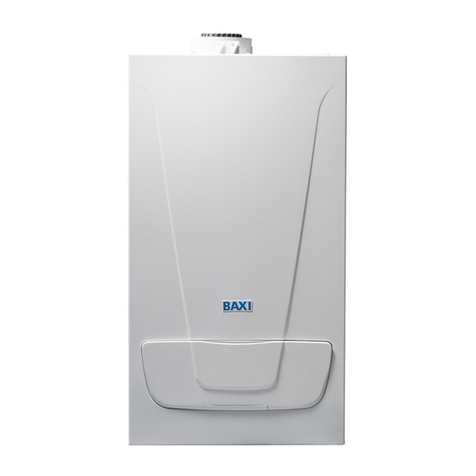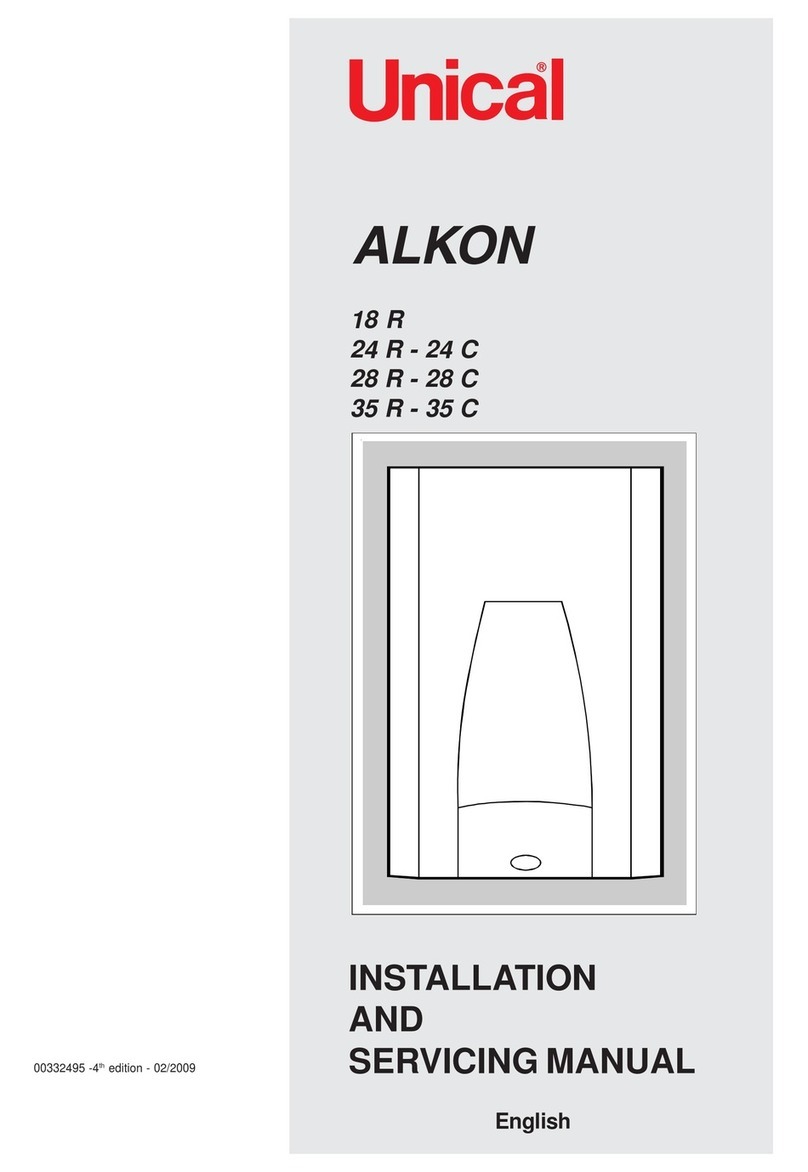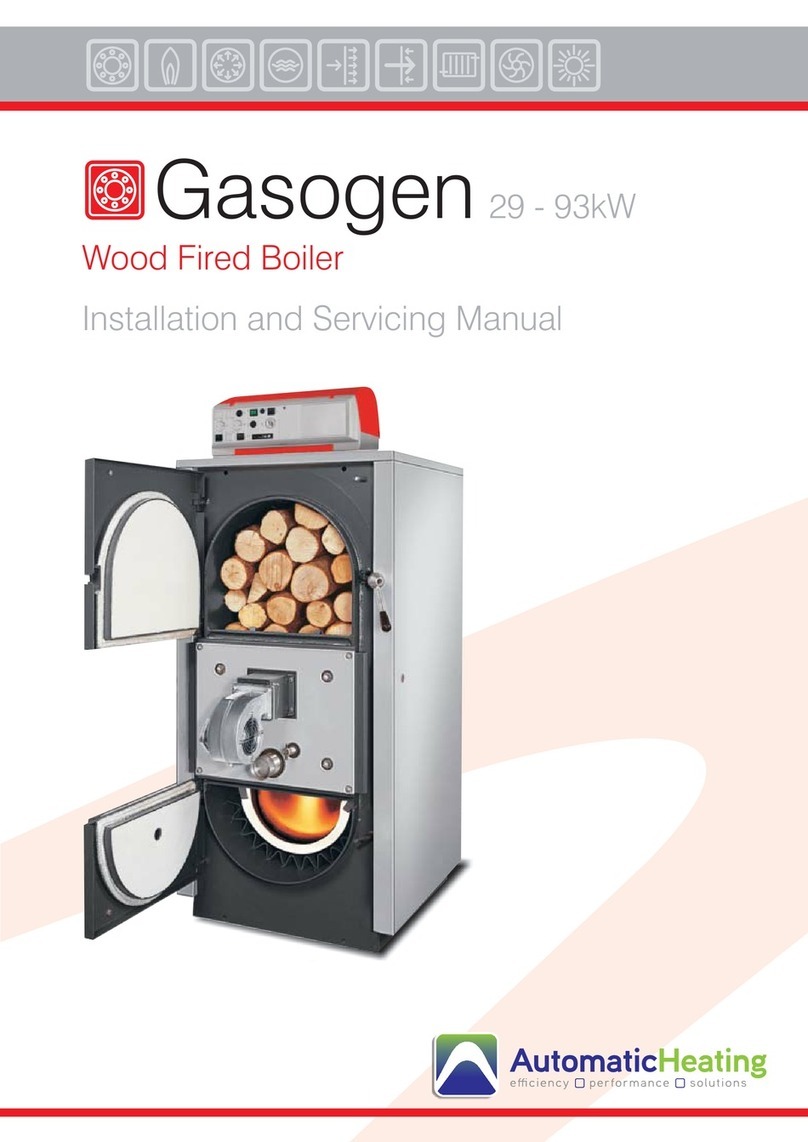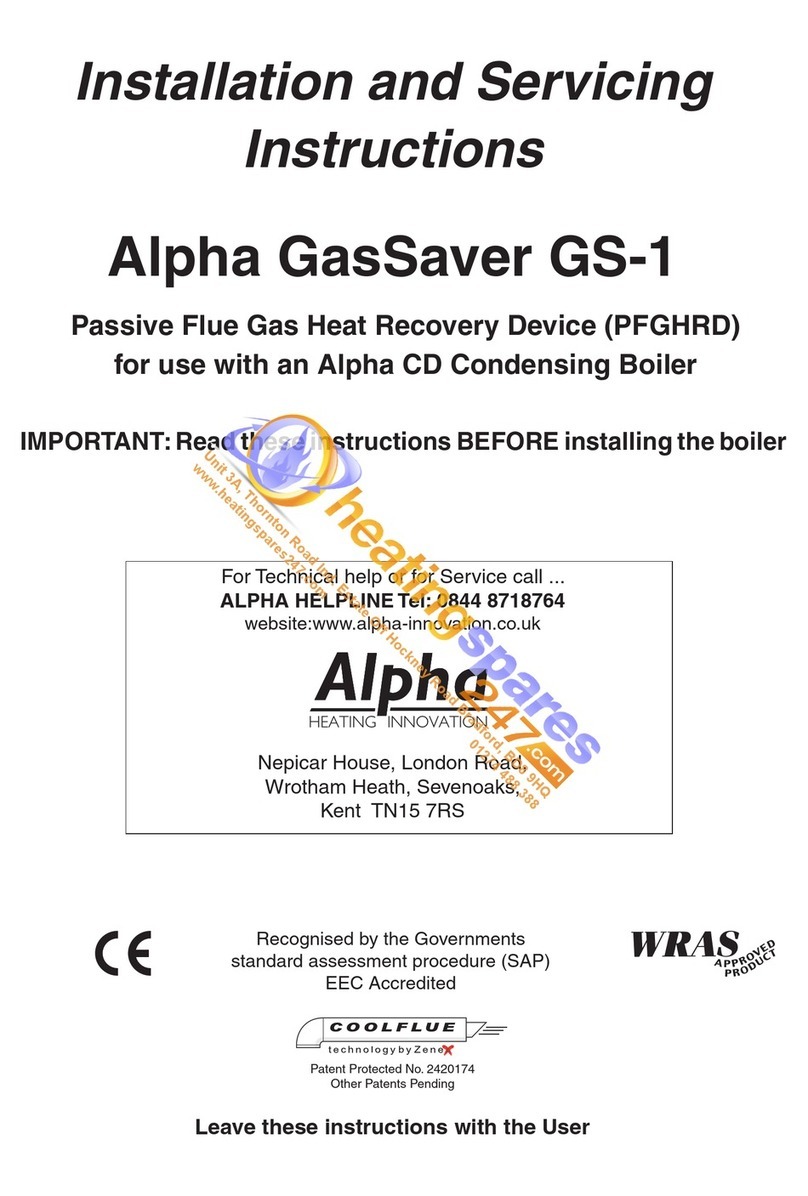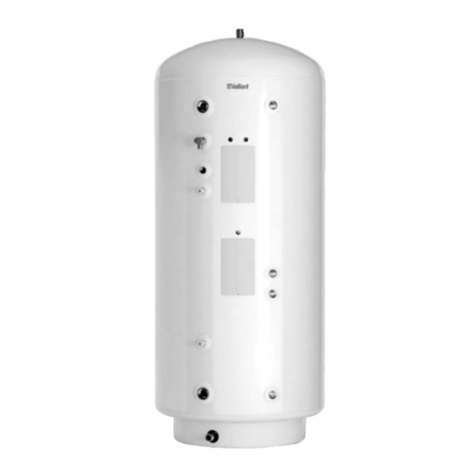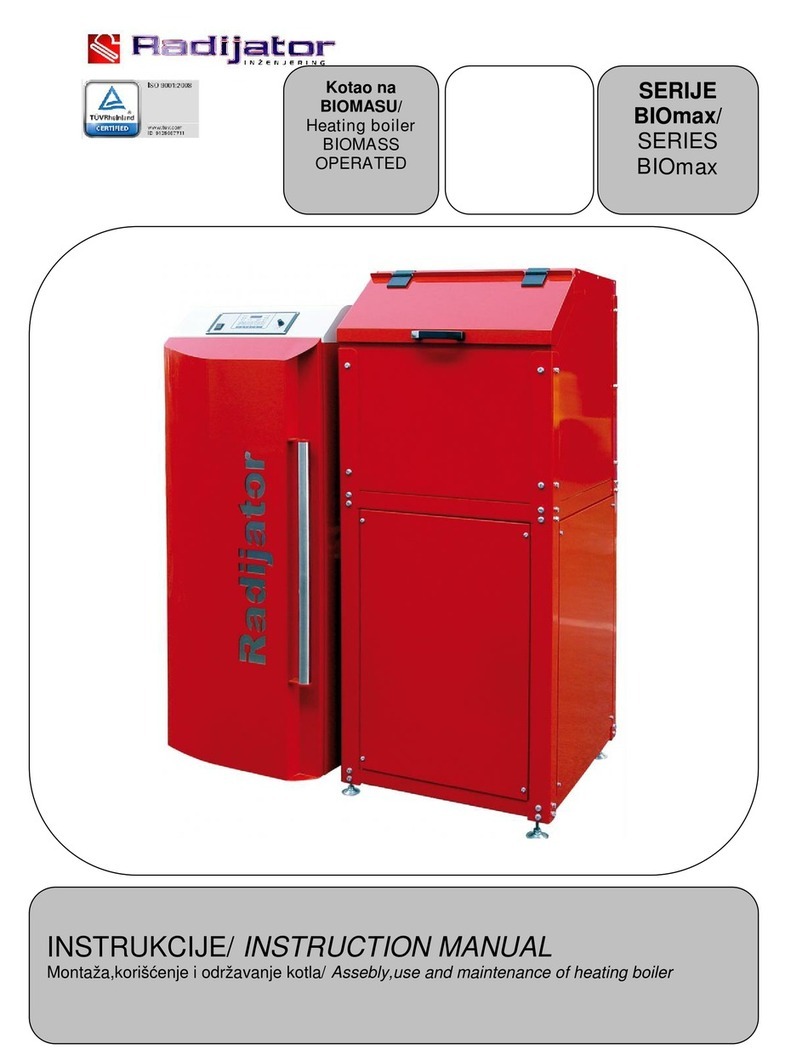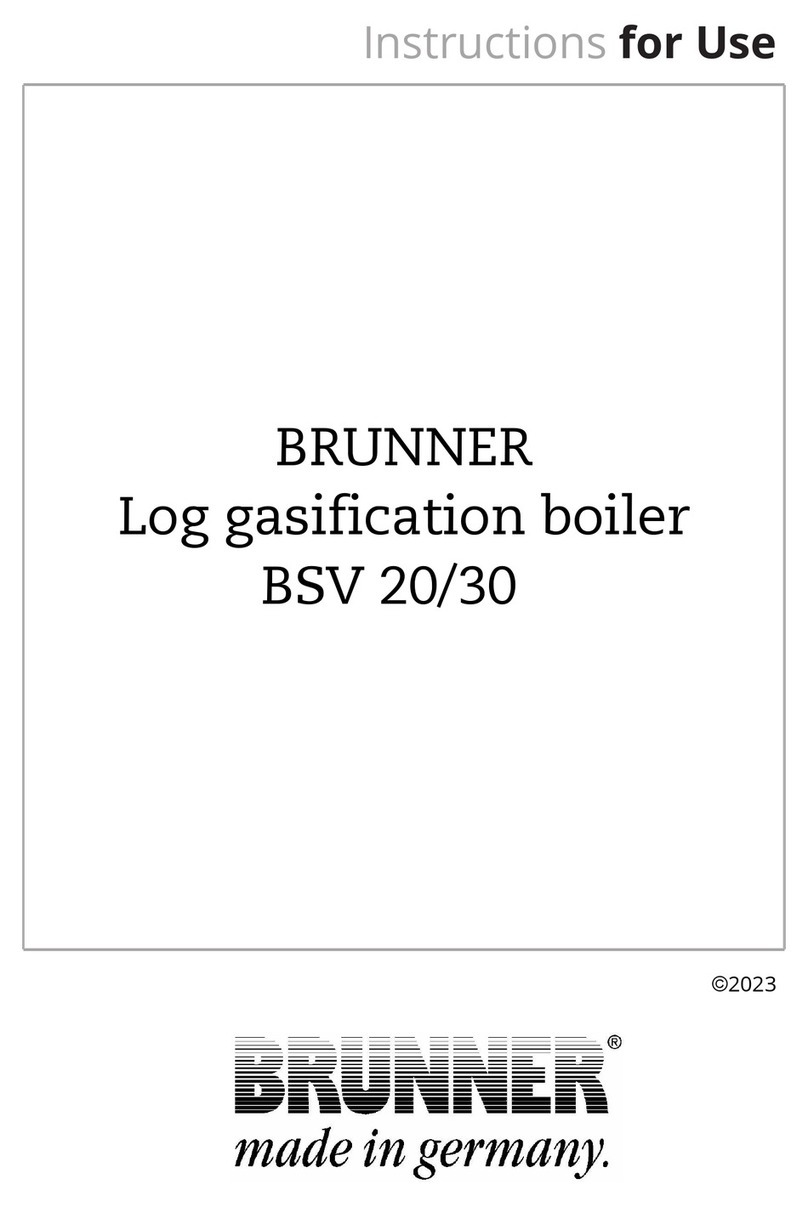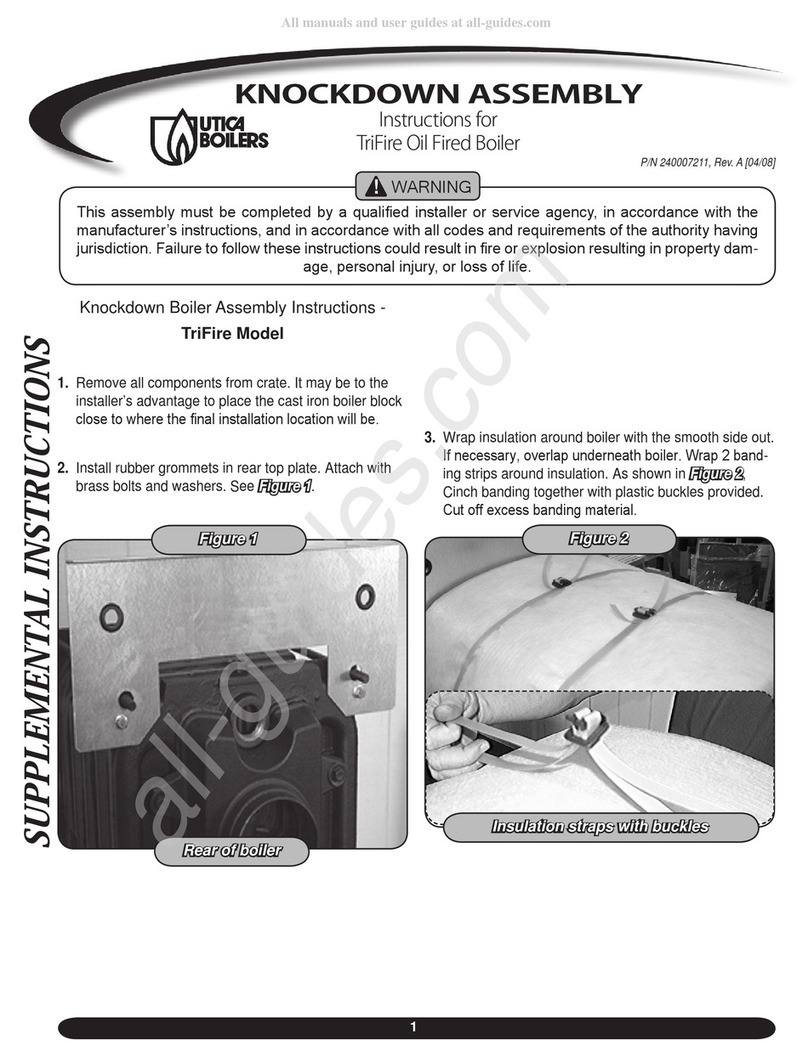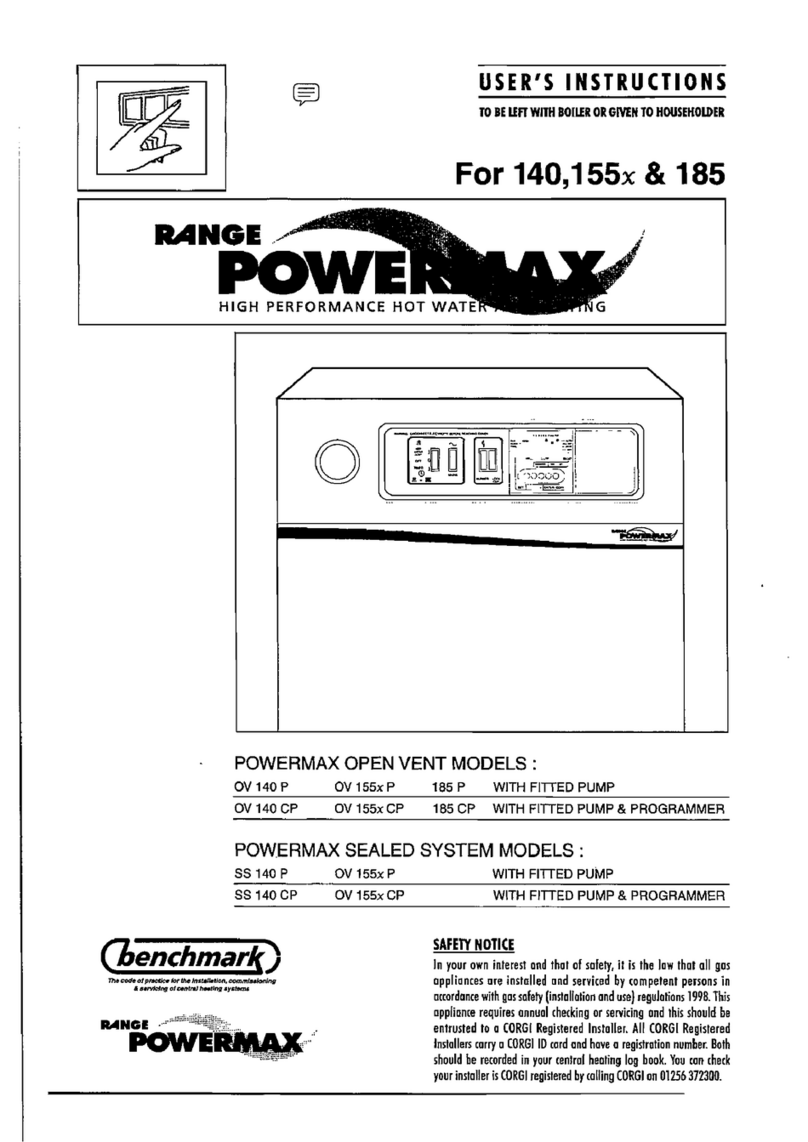MINIMUM EFFECTIVE AREA OF
COMPARTMENT AIR VENTS 140 155xx
Position of opening Ventilated to Area of each vent
High and Low Level Room 54cm260cm2
High and Low Level Outside 27cm230cm2
6
7. VENTILATION REQUIREMENTS
a When the appliance is installed in a room or habitable
internal space, there are no specific ventilation requirements.
b When the appliance is installed in a compartment it is
essential that permanent high and low vents are provided for
the circulation of cooling air. Purpose made vents must have
a non-adjustable free area not less than the minimums
specified in the table below.
8. TECHNICAL DATA
Guidance on where to locate the appliance is given in Sections
5, 6 and 7. In some instances it will be advantageous to
pre-plumb pipework or to pre-fix terminal, air/flue pipes and duct.
1. Move appliance to where it is accessible for flue
preparation. For a guide to removing panels, see back
page. Remove 2 screws at bottom of front cover, pull
forward from bottom, gently ease downwards to free
location studs.
140: The lid is retained by 3 screws, 2 in the front edge under
the timer control panel and a third transit screw in the
back of the lid. The lid can be eased upwards from the
rear and pulled gently forwards and away from the
control panel. The transit screw can be discarded if
access is restricted.
155x: Remove recessed screw at top of switch panel and keep
safe. Lift off upper front cover. The top panel is retained
by 4 studs: gently ease upwards to remove. The plinth
cover is retained with 4 screws and 2 screws retain the
rear section.
2. Carefully set aside the outer covers. Remove small
press-out panel(s) either side of casing for plumbing
connection (and flue/air pipes) as necessary. The hand
hold cut outs in the side panels also provide convenient
plumbing access. The cut out in the base allows
pipework to be brought up from floor level, see Plumbing
Guide on page 23, but the pipes must not obstruct
service access to the sump.See Fig. 11.1.
3. Connect one end of electricity supply cable to the user
terminal in accordance with sections 4 and 10. The cable
must be routed via the anchorage and through the
bushing in LH side panel. See Fig. 9.6.
4. Flueing
If installing boiler with vertical RS balanced flue see
separate instructions supplied with vertical flue kit.
If installing boiler with an extended horizontal balanced
flue go to Section 17 of these instructions.
If installing boiler with a Ridge Tile Terminal or Mini
Terminals, see separate instructions supplied with each kit.
The standard flue kit P260 contains the following
components, See Fig.9.2
1 x flue terminal assembly. complete with sealing ring
1 x wall liner
1 x flexible duct AIR INLET ONLY
2 x worm drive clips
Note: The flue terminal assembly MUST be installed
horizontally.
The unit is floor standing and a vertical flat area of wall is
required 1100mm or 1260mm high x 550mm wide. If unit
is being raised above floor level, allow for this in marking
position of flue liner.
4a Mark off the centre of the 140mm (51/2in) diameter hole
as shown in Fig.9.3 and core drill.
If the wall is clad with a combustible material a 25mm
(1in) wide area around the flue liner must be removed.
Measure the wall thickness and cut the liner to this
length.Cut opposite end to lugs.
b Fit the liner through the 140mm (51/2in) diameter hole
(lugs inside) and cement into position, making good
internal and external rendering. The latter may be done
with arm extended through the liner.
c Insert 50mm diameter 90° elbow into flue socket
(vertically rising pipe at the back of the appliance)
9. INSTALLING THE APPLIANCE
140 155x
Nominal Output, kW gross 14.0 16.4
Nominal Input, kW gross 17.1 20.0
Category I2H Gas G 20
Supply Pressure, mbar 20
Gas Rate m3/hr 1.6 2.0
Gas Connection Rc 1/2
Air sense/burner pressure
differential -
–
0.13 ± 0.03mbar.
This is factory set and no
adjustment is intended
NOx < 40 ppm – Class 5
CO < 20 ppm
Thermal store capacity 80 100
(primary water) litres
DHW Temperature °C 55-60 maximum
DHW Flow Rate, litres per 12 18
minute (maximum)
Working Pressures, bar:
Primary SS models 3 max (Design pressure
2.5 to comply with UK
Water Regulations)
Primary OV models 1.0 maximum
DHW 6.0 maximum
DHW 1.5 minimum
Pressure Relief Valve, bar: 3.0
Weight (empty) kg 75 85
Weight (full) kg 155 185
Connections:
CH Flow/Return 22mm Compression
DHW Inlet/Outlet 22mm Compression
Gas Rc 1/2
Pressure Relief 15mm Tube
(1/2 x 3/4 Tundish
supplied loose)
Electricity Supply: 230V ~ 3A fused supply
Cable Entry Top rear of LH panel
Dimensions, mm
Height 1100 1260
Width 540
Depth 600
Clearance requirements for
installation and servicing:
Top 400mm (16 inches)
Sides 5mm (10mm (3/8") total)
Base and back Nil
Front 450mm (18 in) unless
behind an openable door
Flueing:
Flue Types C13 C33 C53
(As flue kit specified)
Bal. Flue Terminal 140mm Diameter
Mini Flue 65mm Diameter
Flue/Air Pipes 51mm Diameter
Standard Flue Length 500mm
Extended Flues Refer to Section 6
(including packaging)
